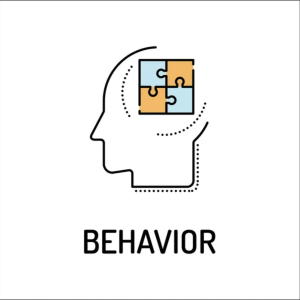“My son hits his little sister out of nowhere.”
“My kid refuses to do her homework or help out with any chores. She never listens.”
“My kid doesn’t care about punishments. I’ve tried everything…time-out, taking away things. Nothing works.“
I hear statements like this every week. Parents often seek help because they are frustrated and perplexed by their child’s behavior. I let these parents in on a little secret: Behavior does not occur in a vacuum. Behavior occurs in context. It results from interactions between a person and their environment. In this post, I will define some key terms and concepts that will allow you to better understand why certain unwanted behaviors are occurring and, in subsequent posts, I will outline best practices for addressing some common behavioral challenges.
What is behavior?
Psychologists practicing behavior therapy believe that behaviors are actions or mannerisms that are observable, measurable, multi-directional, and influenced by one’s environment. Behavior is functional and purposeful. Behavior is both controlled by one’s environment and a source of control over one’s environment. But, how do you know if something is a behavior? You apply the Dead Man’s Test. If a dead man can do it, it isn’t a behavior. If a dead man cannot do it, then it is a behavior.
Why is this important?
It’s important to understand these concepts because changing behavior is most successful when we understand behavior in context. That is, what is the target behavior we aim to change or extinguish? What is driving the target behavior? What is its function?
To assess behavior and its context, we look at the setting events, antecedents, and consequences that surround a behavior. Setting events are conditions or prior events that influence the probability of an individual exhibiting a behavior. Examples of setting events include hunger, lack of sleep, missed medication, having a bad day at school. Importantly, setting events do not cause behavior. Setting events simply make it more or less likely that an individual will exhibit a behavior in the presence of an antecedent (i.e., trigger). Antecedents are events that occurred before the behavior. Giving a child a command or removing access to a preferred item like a tablet are often antecedents to problem behaviors like tantrums. Consequences include any and everything that occurs immediately after the behavior. For example, parents may engage in arguments or further restrict access to preferred items as consequences for children’s difficult behaviors.
It is also important to consider characteristics of the individual and those with whom they interact. For example, we assess psychological factors, personality/temperament traits, and abilities (e.g., developmental, cognitive) that may be at play as well as stressors, like family conflict or financial problems. These factors impact the environment, relationships, and interactions and give us information about things that may or may not be modifiable.
Identifying the function (or purpose) of the behavior
The assessments outlined above provide information about behavioral functions or purpose. A behavior may have one function but, oftentimes, multiple functions are at play. There are several functions of behavior, including access to tangibles, attention, escape/avoidance, automatic, and counter-control. Let’s take a look at those functions in action:
ACCESS TO TANGIBLES: access to a desired object or activity
Example: A child wants to play on her mother’s phone. Her mother says, “no”. The child throws a tantrum until her mother allows her to play with the phone.
Example: A child wants to go outside to play. His father says, “First, put your toys in the toy box and then you can go out to play.” The child puts his toys away in order to access a desired activity.
ACCESS TO ATTENTION: access to another person’s attention
Example: A mother is talking with another adult. The mother’s child begins to whine. The mother continues engaging in conversation with the other adult. The child begins pulling on the mother’s arm. The parent tells the child to stop and then picks up and holds the child.
Example: A teenager sends multiple text messages to a peer. The peer does not respond. The teenager escalates the behavior and begins calling repeatedly until the peer engages in conversation.
ESCAPE: avoidance of something like a task, event, or emotion
Example: A teenager is told to stop watching television (preferred activity) and to do his homework (unpleasant activity). At first, he ignores his mother. The mother begins to “nag” the teenager. He says “okay” in acknowledgment and continues to watch television.
Example: A child is afraid of bees. The child refuses to play at the park with his sister because he saw a bee near the playground. He waits in the car until it is time to go home.
AUTOMATIC (sensory): behaviors that are self-reinforcing because they feel good or remove an unpleasant feeling; their reinforcement is independent of one’s social environment.
Examples: Scratching an itch, “stimming” behavior (often seen in individuals on the autism spectrum), hair pulling (as in trichotillomania).
COUNTER-CONTROL: behavioral responses to aversive social control that attempt to oppose control through defensive responding that may include avoidance, attacks, or passive resistance; these responses do not reinforce the controller’s aversive control
Example: A bully teases a child and blocks him from passing on the sidewalk; the child responds by shoving the bully out of the way and proceeding to walk down the sidewalk.
Example: In an attempt to increase work completion, a teacher makes recess contingent on students finishing their work. The class responds by decreasing work completion. The teacher removes the work completion requirement and work completion rates return to previous levels.
To gain a better understanding of what the function of a behavior may be, ask yourself these two hypothetical questions:
- (Antecedent) If I needed to, how could I intentionally “turn on” this behavior in my child?
- (Consequence) If I needed to make this behavior stop, how would I “turn off” the behavior quickly?
Here is an example of tantrum behavior functioning as an ESCAPE to TANGIBLE for the child:
- (Antecedent) If I needed to, how could I intentionally “turn on” this behavior in my child?
- Tell my child that it is time to turn off the tablet and go take a shower.
- (Behavior) Child begins crying and having a tantrum.
- (Consequence) If I needed to make this behavior stop, how would I “turn off” the behavior quickly?
- Tell my child he can have 10 more minutes.
Interactions are reciprocally influential. A parent’s behavior in response to a child’s behavior is functional as well. In the above example, the removal of the demand (restricted access to tablet + command to do a non-preferred task) serves to stop an aversive child behavior (crying/tantrum). The child temporarily escapes the shower and gets more tablet time; the parent escapes the crying/tantrum.
Understanding a behavior in context is important in learning to effectively modify and manage behavior. However, this understanding alone may be insufficient to modify and manage behavior. Stay tuned for a future post on leveraging our understanding of the principles of behavioral reinforcement to enact and maintain behavior change.




